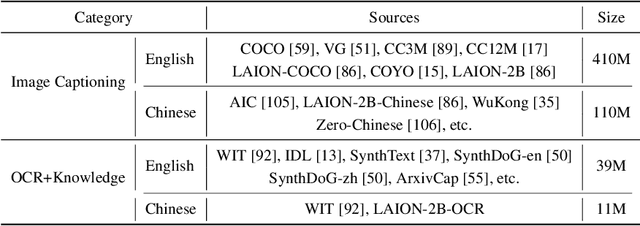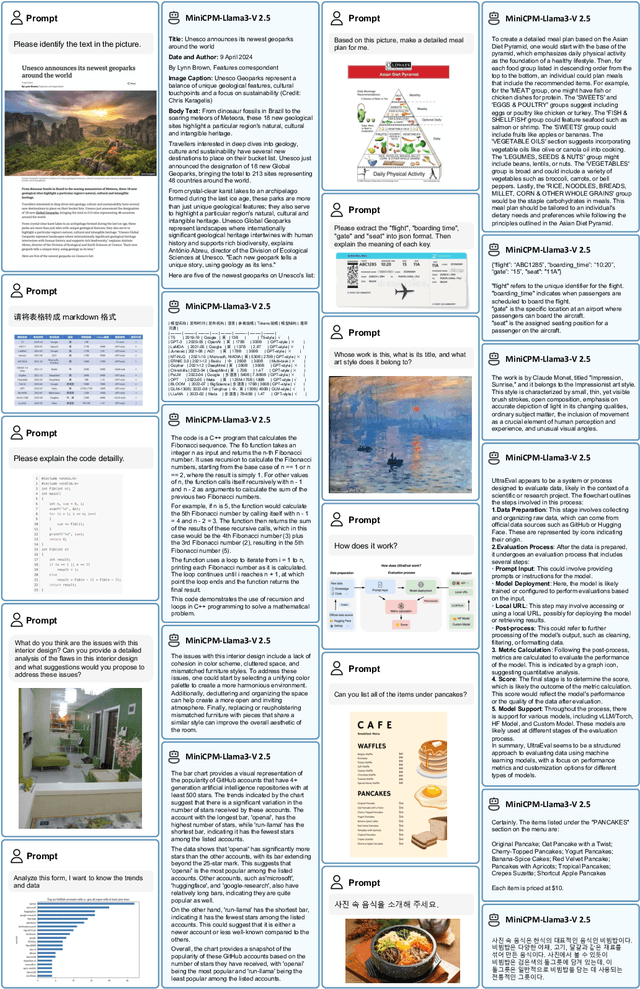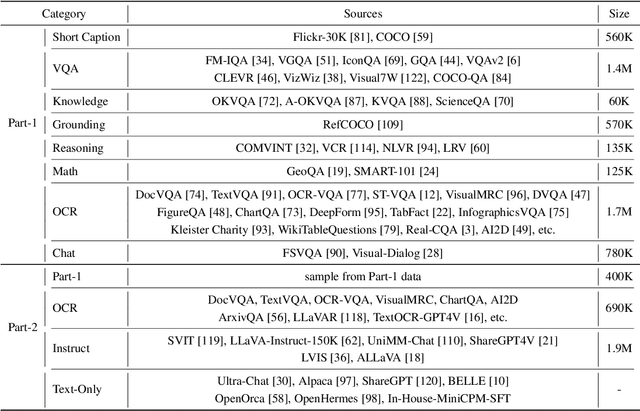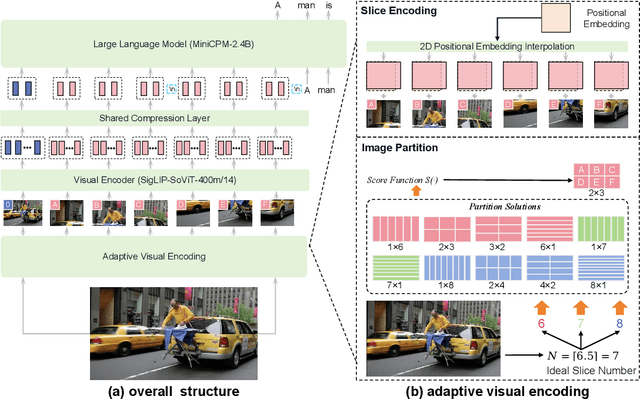Zhi Zheng
Diffusion-Based mmWave Radar Point Cloud Enhancement Driven by Range Images
Mar 04, 2025Abstract:Millimeter-wave (mmWave) radar has attracted significant attention in robotics and autonomous driving. However, despite the perception stability in harsh environments, the point cloud generated by mmWave radar is relatively sparse while containing significant noise, which limits its further development. Traditional mmWave radar enhancement approaches often struggle to leverage the effectiveness of diffusion models in super-resolution, largely due to the unnatural range-azimuth heatmap (RAH) or bird's eye view (BEV) representation. To overcome this limitation, we propose a novel method that pioneers the application of fusing range images with image diffusion models, achieving accurate and dense mmWave radar point clouds that are similar to LiDAR. Benefitting from the projection that aligns with human observation, the range image representation of mmWave radar is close to natural images, allowing the knowledge from pre-trained image diffusion models to be effectively transferred, significantly improving the overall performance. Extensive evaluations on both public datasets and self-constructed datasets demonstrate that our approach provides substantial improvements, establishing a new state-of-the-art performance in generating truly three-dimensional LiDAR-like point clouds via mmWave radar.
Reward-Safety Balance in Offline Safe RL via Diffusion Regularization
Feb 18, 2025Abstract:Constrained reinforcement learning (RL) seeks high-performance policies under safety constraints. We focus on an offline setting where the agent has only a fixed dataset -- common in realistic tasks to prevent unsafe exploration. To address this, we propose Diffusion-Regularized Constrained Offline Reinforcement Learning (DRCORL), which first uses a diffusion model to capture the behavioral policy from offline data and then extracts a simplified policy to enable efficient inference. We further apply gradient manipulation for safety adaptation, balancing the reward objective and constraint satisfaction. This approach leverages high-quality offline data while incorporating safety requirements. Empirical results show that DRCORL achieves reliable safety performance, fast inference, and strong reward outcomes across robot learning tasks. Compared to existing safe offline RL methods, it consistently meets cost limits and performs well with the same hyperparameters, indicating practical applicability in real-world scenarios.
Unleashing the Power of Large Language Model for Denoising Recommendation
Feb 13, 2025Abstract:Recommender systems are crucial for personalizing user experiences but often depend on implicit feedback data, which can be noisy and misleading. Existing denoising studies involve incorporating auxiliary information or learning strategies from interaction data. However, they struggle with the inherent limitations of external knowledge and interaction data, as well as the non-universality of certain predefined assumptions, hindering accurate noise identification. Recently, large language models (LLMs) have gained attention for their extensive world knowledge and reasoning abilities, yet their potential in enhancing denoising in recommendations remains underexplored. In this paper, we introduce LLaRD, a framework leveraging LLMs to improve denoising in recommender systems, thereby boosting overall recommendation performance. Specifically, LLaRD generates denoising-related knowledge by first enriching semantic insights from observational data via LLMs and inferring user-item preference knowledge. It then employs a novel Chain-of-Thought (CoT) technique over user-item interaction graphs to reveal relation knowledge for denoising. Finally, it applies the Information Bottleneck (IB) principle to align LLM-generated denoising knowledge with recommendation targets, filtering out noise and irrelevant LLM knowledge. Empirical results demonstrate LLaRD's effectiveness in enhancing denoising and recommendation accuracy.
Monte Carlo Tree Search for Comprehensive Exploration in LLM-Based Automatic Heuristic Design
Jan 16, 2025Abstract:Handcrafting heuristics for solving complex planning tasks (e.g., NP-hard combinatorial optimization (CO) problems) is a common practice but requires extensive domain knowledge. Recently, Large Language Model (LLM)-based automatic heuristics design (AHD) methods have shown promise in generating high-quality heuristics without manual intervention. Existing LLM-based AHD methods employ a population to maintain a fixed number of top-performing LLM-generated heuristics and introduce evolutionary computation (EC) to enhance the population iteratively. However, the population-based procedure brings greedy properties, often resulting in convergence to local optima. Instead, to more comprehensively explore the space of heuristics, we propose using Monte Carlo Tree Search (MCTS) for LLM-based heuristic evolution while preserving all LLM-generated heuristics in a tree structure. With a novel thought-alignment process and an exploration-decay technique, the proposed MCTS-AHD method delivers significantly higher-quality heuristics on various complex tasks. Our code is available at https://github.com/zz1358m/MCTS-AHD-master.
CaDA: Cross-Problem Routing Solver with Constraint-Aware Dual-Attention
Nov 30, 2024Abstract:Vehicle Routing Problems (VRPs) are significant Combinatorial Optimization (CO) problems holding substantial practical importance. Recently, Neural Combinatorial Optimization (NCO), which involves training deep learning models on extensive data to learn vehicle routing heuristics, has emerged as a promising approach due to its efficiency and the reduced need for manual algorithm design. However, applying NCO across diverse real-world scenarios with various constraints necessitates cross-problem capabilities. Current NCO methods typically employ a unified model lacking a constraint-specific structure, thereby restricting their cross-problem performance. Current multi-task methods for VRPs typically employ a constraint-unaware model, limiting their cross-problem performance. Furthermore, they rely solely on global connectivity, which fails to focus on key nodes and leads to inefficient representation learning. This paper introduces a Constraint-Aware Dual-Attention Model (CaDA), designed to address these limitations. CaDA incorporates a constraint prompt that efficiently represents different problem variants. Additionally, it features a dual-attention mechanism with a global branch for capturing broader graph-wide information and a sparse branch that selectively focuses on the most relevant nodes. We comprehensively evaluate our model on 16 different VRPs and compare its performance against existing cross-problem VRP solvers. CaDA achieves state-of-the-art results across all the VRPs. Our ablation study further confirms that each component of CaDA contributes positively to its cross-problem learning performance.
Harnessing Multimodal Large Language Models for Multimodal Sequential Recommendation
Aug 20, 2024



Abstract:Recent advances in Large Language Models (LLMs) have demonstrated significant potential in the field of Recommendation Systems (RSs). Most existing studies have focused on converting user behavior logs into textual prompts and leveraging techniques such as prompt tuning to enable LLMs for recommendation tasks. Meanwhile, research interest has recently grown in multimodal recommendation systems that integrate data from images, text, and other sources using modality fusion techniques. This introduces new challenges to the existing LLM-based recommendation paradigm which relies solely on text modality information. Moreover, although Multimodal Large Language Models (MLLMs) capable of processing multi-modal inputs have emerged, how to equip MLLMs with multi-modal recommendation capabilities remains largely unexplored. To this end, in this paper, we propose the Multimodal Large Language Model-enhanced Multimodaln Sequential Recommendation (MLLM-MSR) model. To capture the dynamic user preference, we design a two-stage user preference summarization method. Specifically, we first utilize an MLLM-based item-summarizer to extract image feature given an item and convert the image into text. Then, we employ a recurrent user preference summarization generation paradigm to capture the dynamic changes in user preferences based on an LLM-based user-summarizer. Finally, to enable the MLLM for multi-modal recommendation task, we propose to fine-tune a MLLM-based recommender using Supervised Fine-Tuning (SFT) techniques. Extensive evaluations across various datasets validate the effectiveness of MLLM-MSR, showcasing its superior ability to capture and adapt to the evolving dynamics of user preferences.
MiniCPM-V: A GPT-4V Level MLLM on Your Phone
Aug 03, 2024



Abstract:The recent surge of Multimodal Large Language Models (MLLMs) has fundamentally reshaped the landscape of AI research and industry, shedding light on a promising path toward the next AI milestone. However, significant challenges remain preventing MLLMs from being practical in real-world applications. The most notable challenge comes from the huge cost of running an MLLM with a massive number of parameters and extensive computation. As a result, most MLLMs need to be deployed on high-performing cloud servers, which greatly limits their application scopes such as mobile, offline, energy-sensitive, and privacy-protective scenarios. In this work, we present MiniCPM-V, a series of efficient MLLMs deployable on end-side devices. By integrating the latest MLLM techniques in architecture, pretraining and alignment, the latest MiniCPM-Llama3-V 2.5 has several notable features: (1) Strong performance, outperforming GPT-4V-1106, Gemini Pro and Claude 3 on OpenCompass, a comprehensive evaluation over 11 popular benchmarks, (2) strong OCR capability and 1.8M pixel high-resolution image perception at any aspect ratio, (3) trustworthy behavior with low hallucination rates, (4) multilingual support for 30+ languages, and (5) efficient deployment on mobile phones. More importantly, MiniCPM-V can be viewed as a representative example of a promising trend: The model sizes for achieving usable (e.g., GPT-4V) level performance are rapidly decreasing, along with the fast growth of end-side computation capacity. This jointly shows that GPT-4V level MLLMs deployed on end devices are becoming increasingly possible, unlocking a wider spectrum of real-world AI applications in the near future.
PyBench: Evaluating LLM Agent on various real-world coding tasks
Jul 23, 2024



Abstract:The LLM Agent, equipped with a code interpreter, is capable of automatically solving real-world coding tasks, such as data analysis and image editing. However, existing benchmarks primarily focus on either simplistic tasks, such as completing a few lines of code, or on extremely complex and specific tasks at the repository level, neither of which are representative of various daily coding tasks. To address this gap, we introduce \textbf{PyBench}, a benchmark encompassing five main categories of real-world tasks, covering more than 10 types of files. Given a high-level user query and related files, the LLM Agent needs to reason and execute Python code via a code interpreter for a few turns before making a formal response to fulfill the user's requirements. Successfully addressing tasks in PyBench demands a robust understanding of various Python packages, superior reasoning capabilities, and the ability to incorporate feedback from executed code. Our evaluations indicate that current open-source LLMs are struggling with these tasks. Hence, we conduct analysis and experiments on four kinds of datasets proving that comprehensive abilities are needed for PyBench. Our fine-tuned 8B size model: \textbf{PyLlama3} achieves an exciting performance on PyBench which surpasses many 33B and 70B size models. Our Benchmark, Training Dataset, and Model are available at: \href{https://github.com/Mercury7353/PyBench}{https://github.com/Mercury7353/PyBench}
An Adaptive System for Wearable Devices to Detect Stress Using Physiological Signals
Jul 21, 2024Abstract:Timely stress detection is crucial for protecting vulnerable groups from long-term detrimental effects by enabling early intervention. Wearable devices, by collecting real-time physiological signals, offer a solution for accurate stress detection accommodating individual differences. This position paper introduces an adaptive framework for personalized stress detection using PPG and EDA signals. Unlike traditional methods that rely on a generalized model, which may suffer performance drops when applied to new users due to domain shifts, this framework aims to provide each user with a personalized model for higher stress detection accuracy. The framework involves three stages: developing a generalized model offline with an initial dataset, adapting the model to the user's unlabeled data, and fine-tuning it with a small set of labeled data obtained through user interaction. This approach not only offers a foundation for mobile applications that provide personalized stress detection and intervention but also has the potential to address a wider range of mental health issues beyond stress detection using physiological signals.
UDC: A Unified Neural Divide-and-Conquer Framework for Large-Scale Combinatorial Optimization Problems
Jun 29, 2024Abstract:Single-stage neural combinatorial optimization solvers have achieved near-optimal results on various small-scale combinatorial optimization (CO) problems without needing expert knowledge. However, these solvers exhibit significant performance degradation when applied to large-scale CO problems. Recently, two-stage neural methods with divide-and-conquer strategies have shown superiorities in addressing large-scale CO problems. Nevertheless, the efficiency of these methods highly relies on problem-specific heuristics in either the divide or the conquer procedure, which limits their applicability to general CO problems. Moreover, these methods employ separate training schemes and ignore the interdependencies between the dividing and conquering strategies, which often leads to sub-optimal solutions. To tackle these drawbacks, this article develops a unified neural divide-and-conquer framework (i.e., UDC) for solving general large-scale CO problems. UDC offers a Divide-Conquer-Reunion (DCR) training method to eliminate the negative impact of a sub-optimal dividing policy. Employing a high-efficiency Graph Neural Network (GNN) for global dividing and a fixed-length sub-path solver for conquering sub-problems, the proposed UDC framework demonstrates extensive applicability, achieving superior performance in 10 representative large-scale CO problems.
 Add to Chrome
Add to Chrome Add to Firefox
Add to Firefox Add to Edge
Add to Edge